If you’ve ever visited any stretch of our planet’s 221,208 miles of coastline, you probably took part in one of the countless activities the ocean lends itself to. You might have tried surfing, maybe you had a go at sea-kayaking, or perhaps you simply dipped a toe in the ocean and then spent the rest of your trip catching rays on the beach. But whatever you got up to, chances are you didn’t try coasteering.
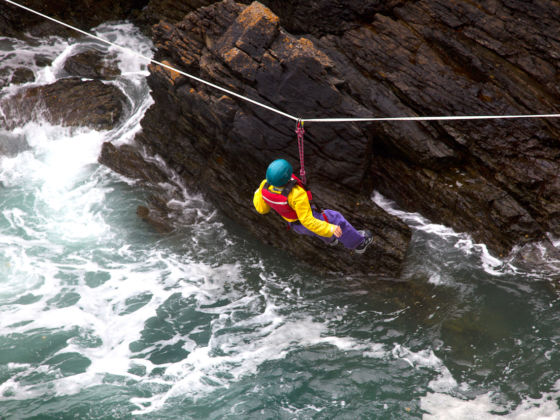

Why Coasteering Is the Coolest Outdoor Activity You’ve Never Tried
Started by surfers in Wales in the 1970s, coasteering has been slow to catch on in other parts of the world, including the United States. Why that is is a bit of a mystery, as it has all of the factors adrenaline junkies crave: hiking, caving, rock climbing, bouldering, ziplining, swimming, and cliff diving. You’d think you’d see people on Instagram posting about it every weekend.
Coasteering is a group activity that involves traversing the intertidal zone (the bit that’s above water at low-tide, but underwater at high-tide) of a stretch of coastline. This is where it differs from traditional rock climbing — the goal is to go horizontally (loosely) from point A to point B, and with rocks, gullies, waves, caves, and tides to negotiate, you’re definitely going to get wet. So, if you want a challenge and a chance to see a coastline’s cliffs from a completely new perspective, coasteering needs to be your next adventure. Here’s everything you need to know before you suit up.
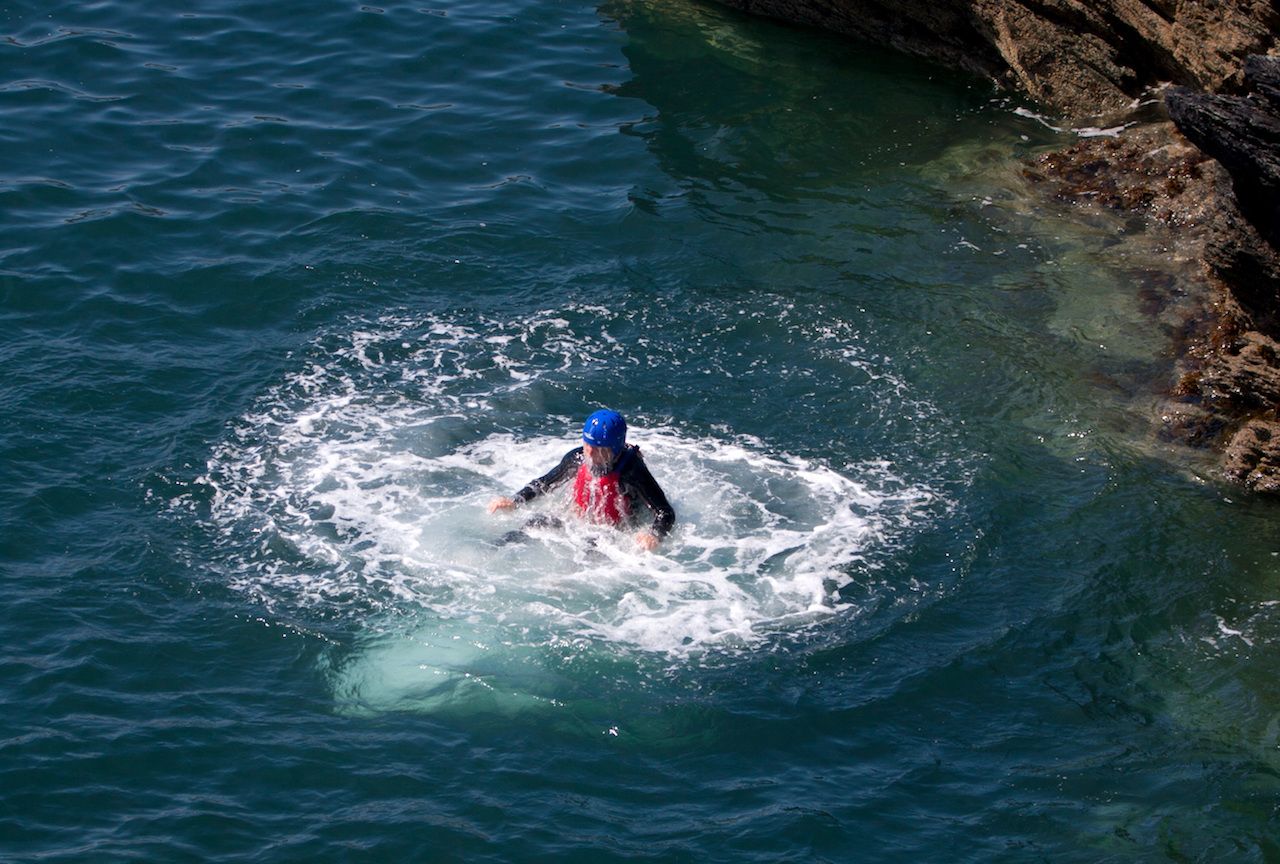
Photo: Gail Johnson/Shutterstock
You don’t have to be an athlete (or even a strong swimmer) to coasteer.
Most coastal activities require a degree of athleticism, and some even require evidence of swimming proficiency, such as the ability to swim two lengths of a pool unaided. Coasteering, on the other hand, was created to suit a range of ages and abilities, making it an ideal activity for families. The basic equipment for coasteering includes a wetsuit, buoyancy aid, and helmet, and these safety measures mean most coasteering activity centers can set a minimum age requirement of eight years old, and a minimum swimming requirement of being able to doggy paddle. But diehard adrenaline-junkies needn’t be put off by the low requirements; coasteering routes can be adapted to suit everyone, including daredevils.
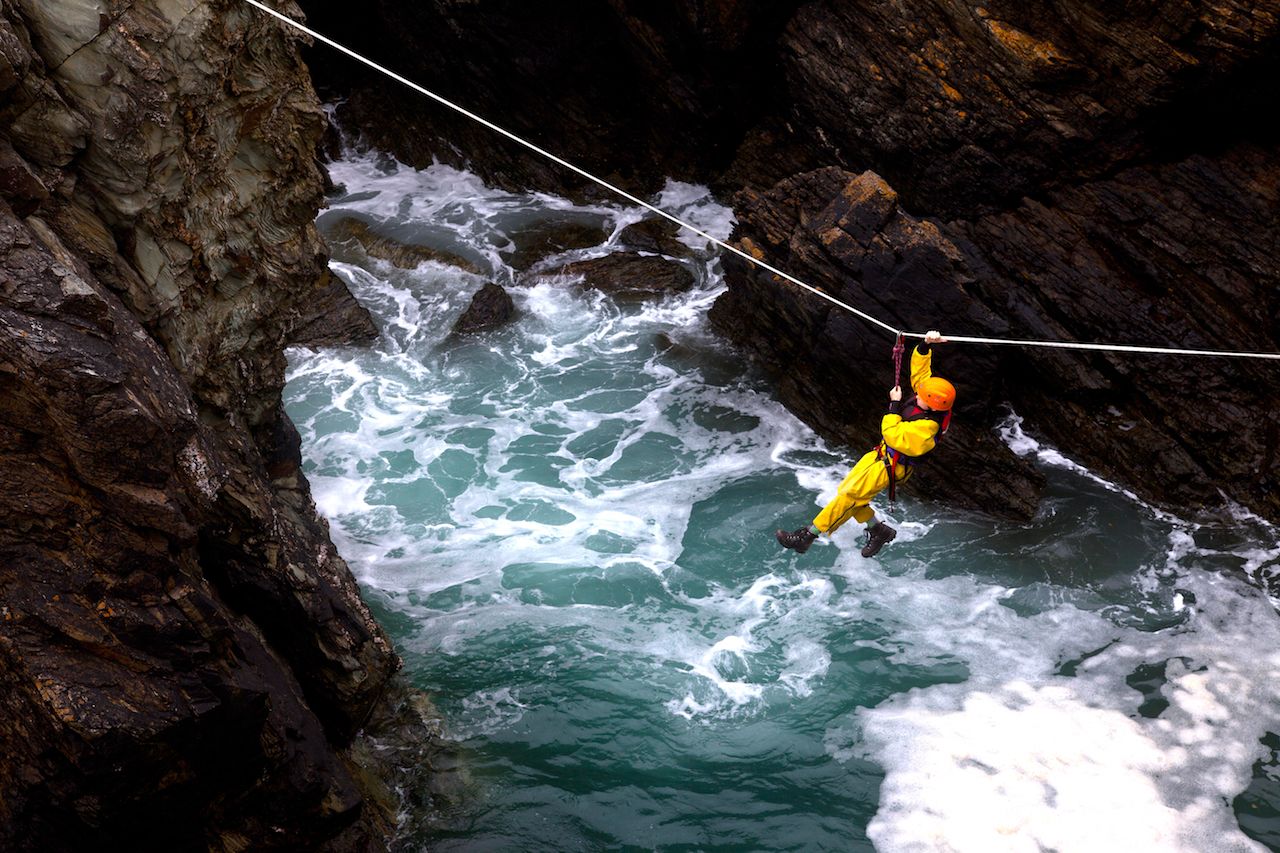
Photo: Gail Johnson/Shutterstock
But it is quite a workout.
It’s a known fact that swimming uses a large number of muscle groups at once. Add climbing and hiking to this, and not only do you have the ultimate strength-building, full-body workout but also one that will challenge your coordination and mental faculties, too. Coasteering, with its naturally extreme environment of waves and cliffs, requires constant alertness: to changes in your surroundings, the safety of everyone taking part, and the impact of each individual’s actions. It’s a mental and physical workout that will leave you absolutely exhausted — you’ll definitely have earned an ice cream on the beach after!
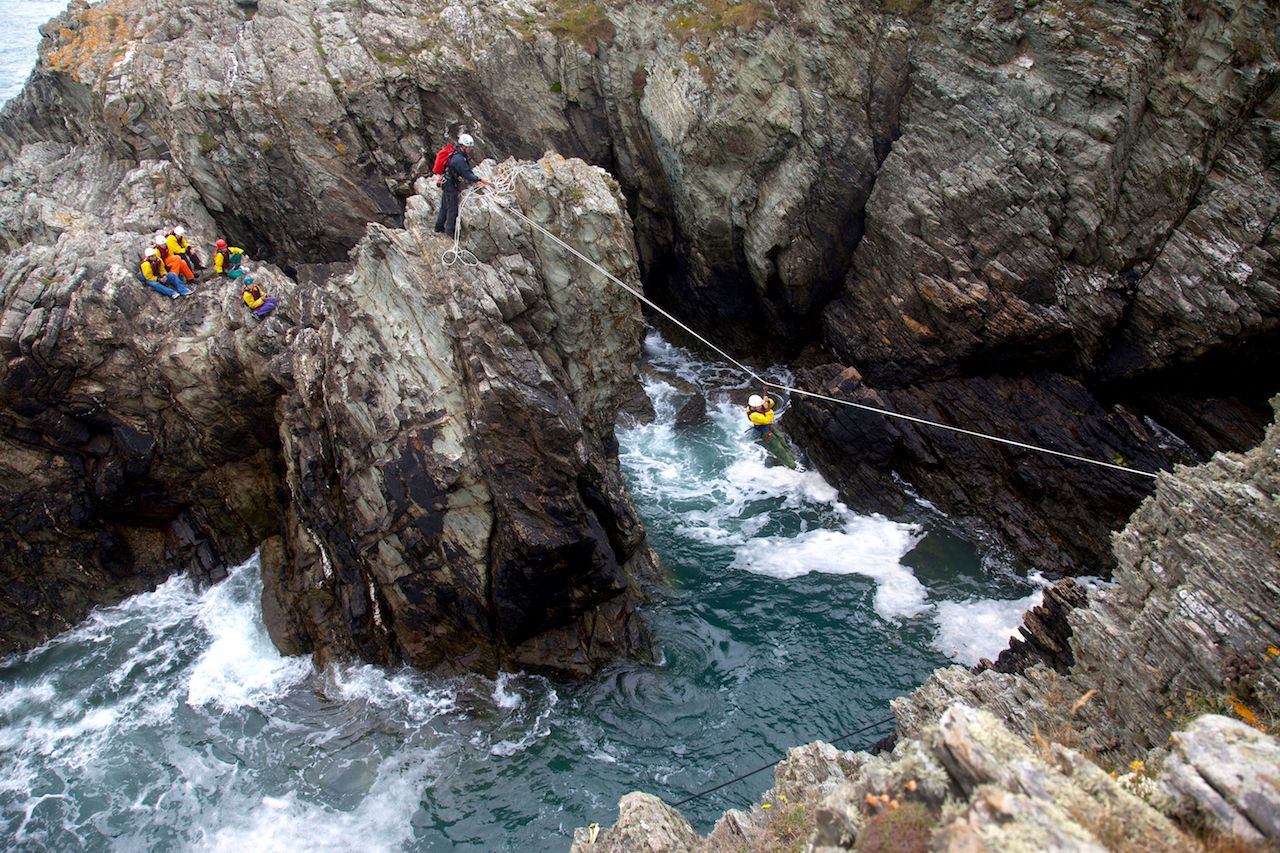
Photo: Gail Johnson/Shutterstock
Coasteering allows you to explore the coastline from a completely new viewpoint.
From surfers to sun-tanners, everyone has his or her own perspective of the sea. But few get a chance to really experience the power of the ocean or witness the range of biodiversity and geological features that characterize marine environments up close. This is where coasteering comes in, offering a rare opportunity to get intimate with some of the most spectacular natural environments on the planet.
When you go coasteering, you’ll tackle gnarly coastline by climbing over it, swimming around it, and jumping into the deepest parts of it. In some parts of the UK, where coasteering has taken off more than in any other country, you can even try “eco-coasteering,” a coasteering tour focused on showing participants the wide variety of flora and fauna that inhabit the coasts of the British Isles.
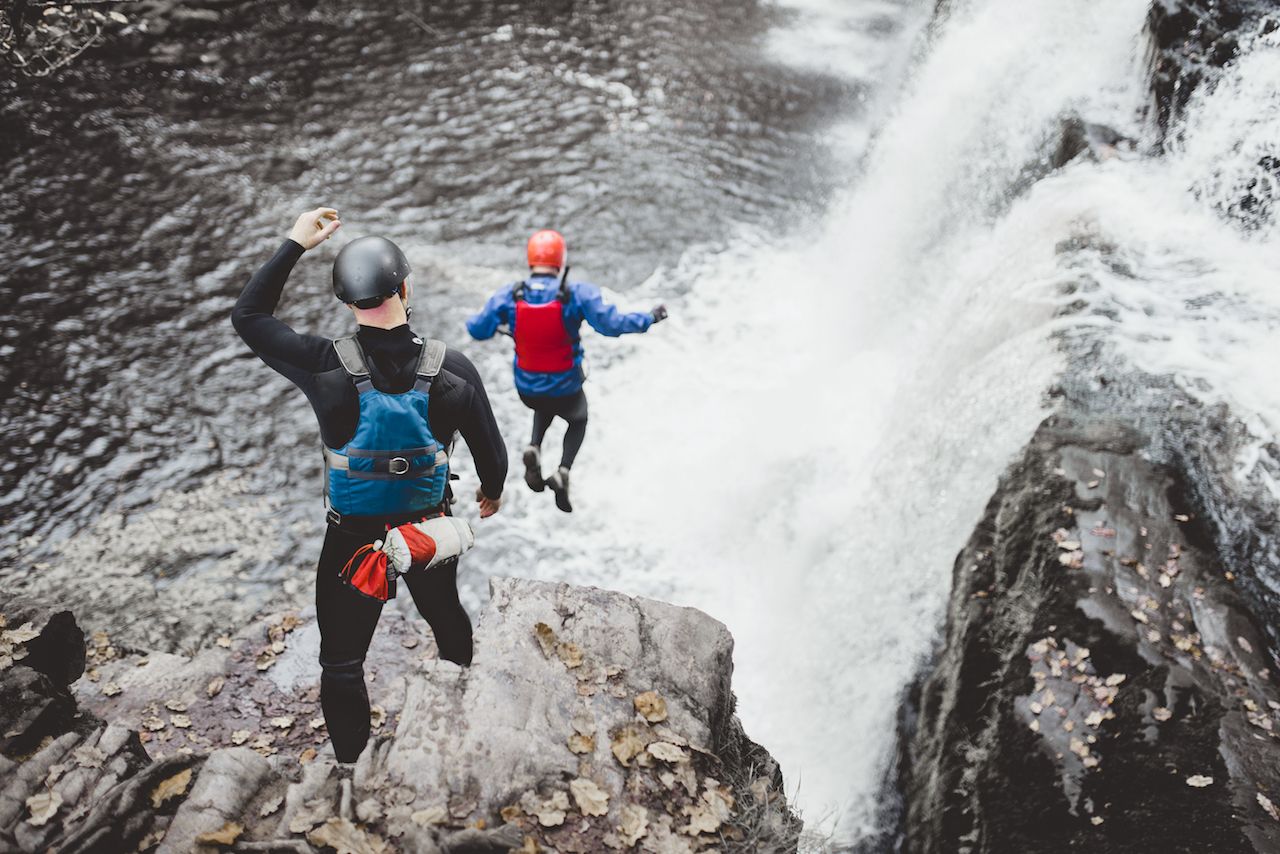
Photo: DawidAndMarcelina/Shutterstock
The natural surroundings make every trip unique.
As any ocean enthusiast will tell you, the sea is never the same. It changes every day, with a whole spectrum of different conditions from dawn to dusk. This changeability is partly what makes the ocean so dangerous, but it also makes it an exciting environment for explorers and adventurers alike; it’s no coincidence that there are shipwrecks, like the wreck of The Mary in Anglesey, only a few miles from many popular coasteering destinations. At any given coasteering location, tides, swells, and the weather — not to mention the slow but sure process of erosion — all combine to ensure that every coasteering trip differs from the one before it.
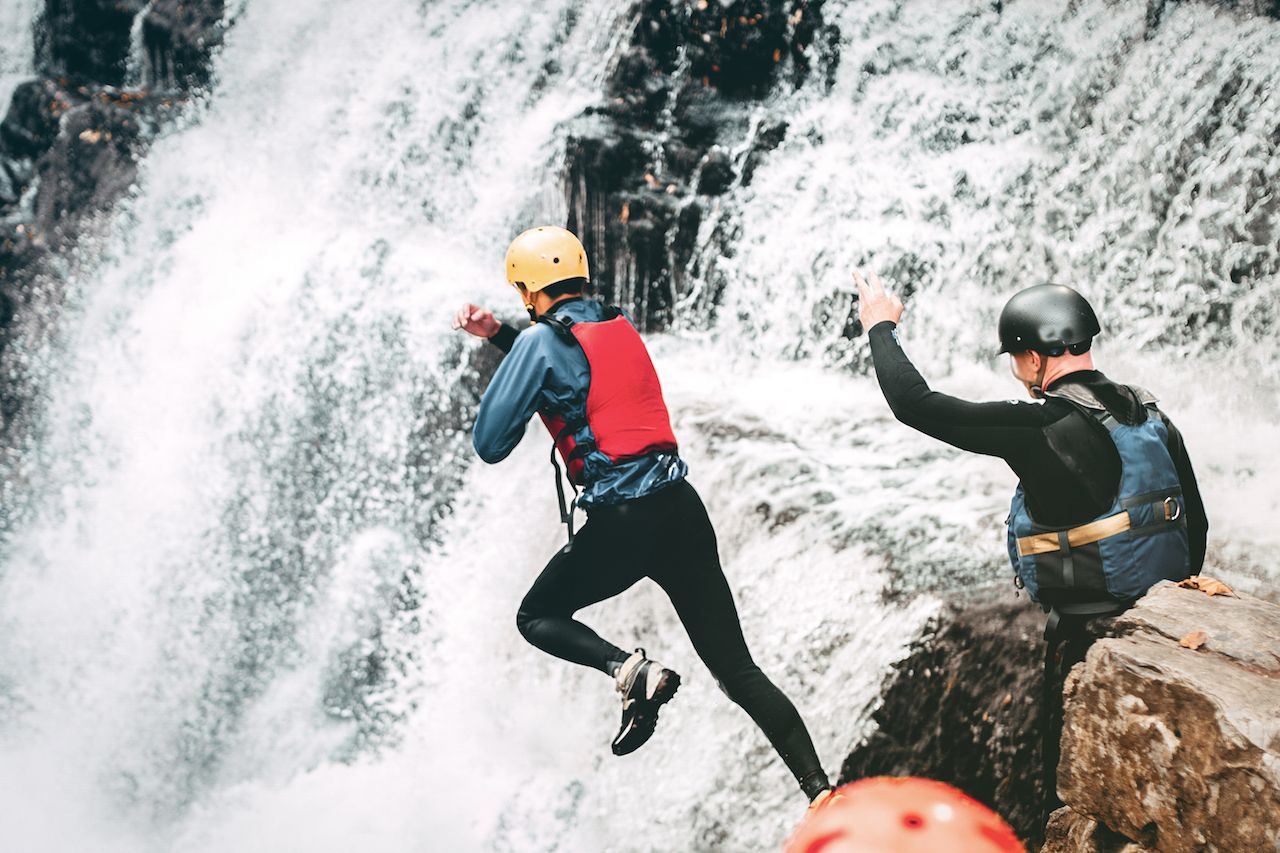
Photo: DawidAndMarcelina/Shutterstock
Coasteering challenges you in new ways at every turn.
Most coasteering routes are designed so that the jumps and climbs get progressively more difficult, going from low jumps into calm waters to high jumps into turbulent plunge pools. These may not sound intimidating or look particularly daunting in coasteering videos, but when you’re standing at the top of the highest jump, on a slippery cliff top looking down into foaming water surrounded by rocks, it’s a different story.
This is coasteering’s ultimate selling point; whether you’re scared of heights, claustrophobic, or a weak swimmer, there’s a challenge to overcome for everyone, and you can push yourself as hard as you feel comfortable with. You can brave the highest jump, crawl into a tight cave, or simply face your fear of open-water swimming. Whatever you choose to do, you’re still guaranteed to leave with a huge sense of accomplishment and a massive smile on your face.